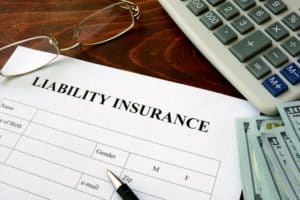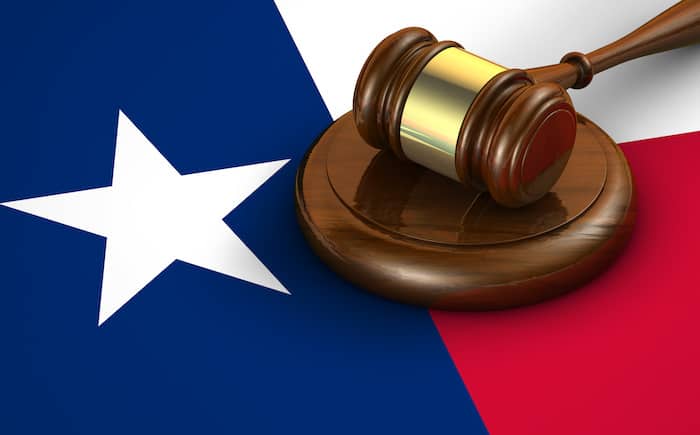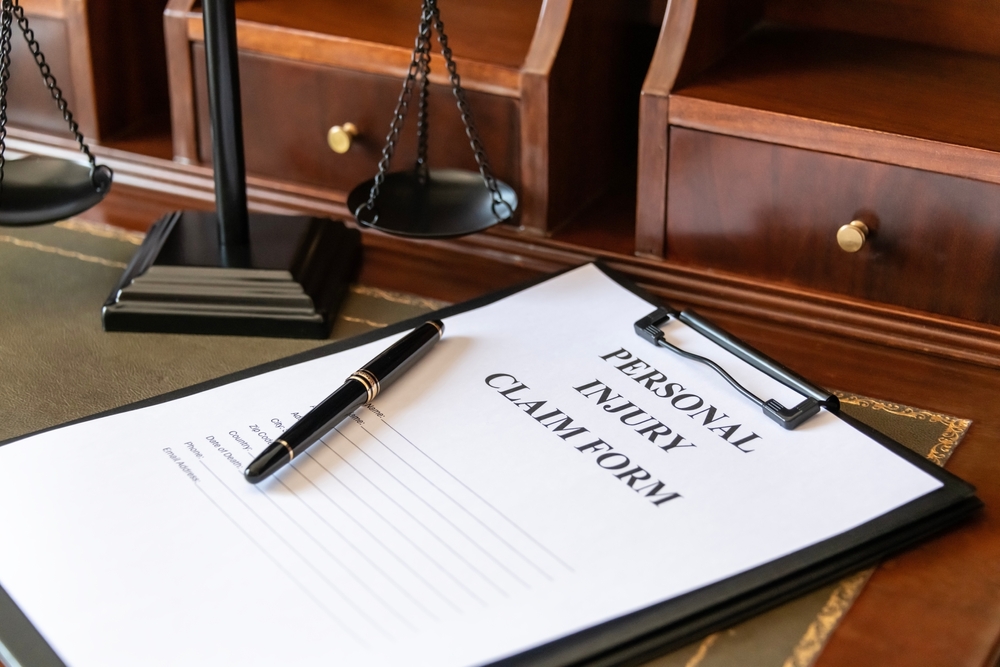
Liability is the foundation of every personal injury case in Texas. Proving that another party bears legal responsibility for your injuries, however, requires more than simply showing an accident occurred.
Under Texas law, you must present specific evidence that the other party’s actions or failures directly caused your harm through negligence or intentional wrongdoing. A skilled Texas personal injury lawyer knows the precise elements needed to establish liability and build arguments that convince insurance companies and juries to award fair compensation for accident victims across Arlington and Tarrant County.
If you’re struggling to prove liability after an injury in Arlington or the surrounding area, Branch & Dhillon offers the aggressive representation needed to establish fault and maximize your recovery. Call (817) 533-3430 today for a free consultation about your personal injury case.
Key Takeaways on Establishing Liability in Texas Personal Injury Cases
- Texas personal injury liability requires proving four elements: duty of care, breach of duty, causation, and damages, with each element requiring specific evidence.
- Different situations create different duties of care, from drivers following traffic laws to property owners maintaining safe premises for visitors.
- Comparative negligence rules in Texas allow recovery even when partially at fault, as long as your responsibility doesn’t exceed 50% of the accident.
- Evidence establishing liability includes witness testimony, physical evidence, expert opinions, and documentation showing the defendant’s actions fell below acceptable standards.
- Multiple parties may share liability for injuries, creating opportunities to recover from several insurance policies and defendants simultaneously.
How Branch & Dhillon Proves Liability in Arlington Personal Injury Cases

Branch & Dhillon brings decades of combined experience proving liability in personal injury cases across Arlington and the Dallas–Fort Worth metroplex. Our Texas personal injury lawyers understand that fault cannot be established by simply pointing fingers. Instead, we develop strong liability cases through thorough investigation, careful use of evidence, and a deep knowledge of Texas negligence law.
Each personal injury case presents its own challenges. A car accident on I-20 calls for different evidence than a slip and fall at Parks Mall. Dog bites in Arlington neighborhoods require different proof than medical malpractice at local hospitals.
Our attorneys adapt their strategy to the specific circumstances of each case while pursuing maximum compensation for our clients. Because insurers often dispute liability to avoid paying, clear and persuasive evidence of fault is essential to obtaining the compensation you need for recovery.
How We Build Your Texas Personal Injury Case From Day One
When Branch & Dhillon accepts your case, we begin working immediately to establish liability. We examine accident scenes before evidence disappears, speak with witnesses while their recollections are fresh, and collect documentation that demonstrates the defendant’s negligence.
Our investigations often reveal important liability factors not included in initial reports. For example, when accidents occur near AT&T Stadium or along Division Street, we review traffic patterns, visibility concerns, and prior incidents to strengthen fault arguments.
This detailed approach uncovers evidence insurance companies hope will remain hidden, leaving them little choice but to acknowledge responsibility for your injuries.
The Four Elements of Negligence Under Texas Law
Texas personal injury law requires proving four distinct elements to establish liability based on negligence. If even one element is missing, your claim cannot succeed, no matter how clear fault may appear. Understanding these requirements helps build stronger cases that withstand insurance company challenges.
The Texas Civil Practice and Remedies Code governs negligence claims, establishing standards courts apply when determining liability. Each element builds upon the previous one, creating a logical chain from the defendant’s obligations through to your compensable injuries.
Understanding Duty of Care in Texas Personal Injury Cases
The first element requires showing the defendant owed you a legal duty of care. This duty varies based on relationships and circumstances surrounding your injury.
Drivers owe duties to follow traffic laws and operate vehicles safely. Property owners owe duties to maintain reasonably safe premises for lawful visitors. Doctors owe duties to provide medical care meeting professional standards.
Some duties arise from general legal obligations while others stem from special relationships or assumed responsibilities. Understanding which duties apply to your situation forms the foundation for proving liability. Without an established duty, no liability exists regardless of the defendant’s actions or your injuries.
Proving Breach of Duty in Texas Injury Claims

Once duty exists, you must prove the defendant breached that duty through actions or inactions falling below required standards. This breach element examines whether the defendant acted as a reasonably prudent person would under similar circumstances.
Breach occurs through both affirmative negligent acts and failures to act when action was required. Running red lights breaches the duty to obey traffic signals. Failing to repair broken stairs breaches the duty to maintain safe property.
Texas courts apply objective standards when evaluating breach, asking what a reasonable person would have done rather than accepting defendants’ subjective explanations. Common breach scenarios include:
- Texting while driving on Cooper Street or other Arlington roads
- Allowing aggressive dogs to roam unleashed in neighborhoods
- Failing to clean spills in grocery stores for extended periods
- Speeding through school zones near Arlington elementary schools
These actions break accepted safety standards and meet the breach requirement for liability, regardless of the defendant’s intentions or awareness of risk.
Breach of Professional Standards in Texas Negligence Claims
Professionals face heightened breach standards based on specialized knowledge and training. Medical malpractice cases require proving healthcare providers breached professional standards of care, not just general reasonableness.
Similarly, commercial truck drivers must meet federal safety regulations beyond basic traffic laws. Engineers and architects face liability for breaches of professional building standards.
These specialized duties create higher bars for acceptable conduct, making breach easier to establish when professionals fail to meet industry standards.
Establishing Causation Between Negligence and Injuries
Causation links the defendant’s breach of duty to your injuries, and Texas law requires proof of two elements: cause in fact and proximate cause. Both must be present for liability to apply.
Cause in fact means your injury would not have occurred without the defendant’s negligence. Proximate cause adds an additional layer, requiring that the harm was a foreseeable result of the defendant’s conduct.
Courts consider whether a reasonable person in the same situation could have anticipated that their negligence might lead to the type of injury you experienced. This foreseeability requirement prevents defendants from being held liable for highly unusual or unpredictable consequences, even when a technical connection between their conduct and the injury exists.
Intervening Causes That Break Liability in Texas Injury Cases
Intervening events between negligence and injury may break causation chains, eliminating liability. If a drunk driver runs a red light but another vehicle strikes you while fleeing the scene, questions arise about whose negligence caused your injuries.
Texas courts look at whether the intervening cause was a foreseeable result of the original negligence. Predictable interventions don’t break causation while extraordinary events might.
Texas personal injury attorneys analyze these complex scenarios to identify every party whose negligence contributed, expanding the avenues for recovery.
Documenting Damages in Personal Injury Cases

The fourth element of liability requires proof that the defendant’s negligence caused actual damages. Under Texas law, there is no recovery for negligence that results in no harm. Damages in a personal injury claim can include both economic losses, such as medical expenses and lost wages, and non-economic losses, such as pain and suffering.
Strong documentation is key to proving the presence and scope of your damages. Medical records demonstrate the seriousness of your injuries, employment records confirm lost income, and photographs can show visible injuries or property damage.
Without thorough documentation, even clear negligence may not lead to fair compensation. Insurers often claim injuries were pre-existing or unrelated to the crash. Call an attorney before contacting your insurance company so they can help you organize records that clearly link your injuries to the at-fault party.
Comparative Negligence and Shared Fault in Texas Personal Injury Law
Texas follows modified comparative negligence rules that affect liability when multiple parties contribute to injuries. Under the Texas Civil Practice and Remedies Code Chapter 33, you may recover damages even when partially at fault.
Your recovery gets reduced by your percentage of fault, but only if your responsibility doesn’t exceed 50%. This system recognizes that accidents often result from multiple parties’ combined negligence rather than single causes.
Multiple Defendants and Joint Liability in Texas Injury Claims
When multiple defendants share liability for injuries, Texas law determines how responsibility gets allocated among them. Each defendant typically bears responsibility only for their proportionate share of fault.
However, defendants may face joint and several liability for certain damages when they acted together or committed intentional torts. Personal injury cases often involve multiple defendants with varying liability levels:
- Driver and employer in commercial vehicle accidents
- Property owner and management company in premises liability
- Manufacturer and retailer in product defect cases
- Multiple drivers in chain reaction collisions
Pursuing all liable parties maximizes recovery by accessing multiple insurance policies and preventing any defendant from escaping their share of responsibility.
Key Evidence That Proves Liability in Texas Personal Injury Claims
Proving liability requires various evidence types that work together to demonstrate all four negligence elements. Physical evidence from accident scenes provides objective proof of how incidents occurred. Skid marks show vehicle speeds and driver reactions while surveillance footage captures actual events.
Witness testimony offers crucial perspectives on defendant behavior and accident circumstances. Expert witnesses explain technical aspects like accident reconstruction or medical causation that establish liability elements beyond layperson understanding.
Documentary evidence including police reports, medical records, and maintenance logs creates paper trails showing negligence patterns. Prior complaints about dangerous conditions or previous similar incidents strengthen liability arguments significantly.
FAQs for Texas Personal Injury Lawyers
What is the statute of limitations for personal injury cases in Texas?
Texas provides two years from the injury date to file most personal injury lawsuits. This deadline applies strictly with few exceptions. Missing the statute of limitations eliminates your right to court recovery regardless of liability strength. Different deadlines may apply for claims against government entities or medical malpractice cases.
How much is my personal injury case worth?
Case values depend on injury severity, liability strength, and available insurance coverage. Minor injuries with clear liability might settle for thousands while catastrophic injuries with multiple defendants may exceed millions. Texas personal injury lawyers evaluate medical expenses, lost income, pain and suffering, and future damages to determine fair compensation.
What if I was partially at fault for my injury?
Texas comparative negligence laws allow recovery when you’re less than 51% at fault. Your compensation gets reduced by your fault percentage, but partial responsibility doesn’t eliminate recovery rights. Strong legal representation minimizes your assigned fault through evidence showing the defendant’s greater negligence contribution.
Do I need a lawyer for a personal injury claim?
While not legally required, attorney representation significantly improves outcomes in personal injury cases. Insurance companies offer unrepresented victims far less than fair value. Attorneys understand liability requirements, damage calculations, and negotiation tactics that maximize recovery while you focus on healing.
What if the at-fault party doesn’t have insurance?
Uninsured defendants complicate recovery but don’t eliminate options. Your own uninsured motorist coverage may apply in vehicle accidents. Personal assets, although harder to collect, remain available through judgments. Alternative liable parties like employers or property owners might provide insurance coverage.
Work With a Proven Texas Personal Injury Lawyer to Secure Compensation

Establishing liability in Texas personal injury cases requires more than showing someone caused your injuries. The legal requirements for proving duty, breach, causation, and damages demand thorough investigation, strategic evidence presentation, and deep understanding of Texas negligence law. Insurance companies exploit any weakness in liability proof to deny or minimize claims.
Branch & Dhillon fights aggressively to establish clear liability and maximize compensation for injury victims throughout Arlington and Tarrant County. We understand the evidence needed to prove each negligence element and counter insurance company tactics designed to avoid responsibility.
Don’t let uncertainty about liability requirements stand in the way of fair compensation for your injuries. Call Branch & Dhillon at (817) 533-3430 for your free consultation with an experienced Texas personal injury lawyer.

